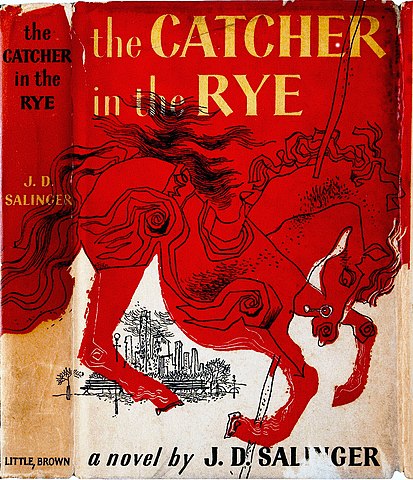
J.D. Salinger: A Literary Icon
J.D. Salinger is one of the most iconic literary figures of the 20th century, and his work has had a profound influence on generations of readers. His 1951 novel The Catcher in the Rye is widely considered among the greatest works of American fiction, and has become a classic of coming-of-age literature. His novels, short stories, and other writings have all been praised for their insight into complex human relationships, their criticism of materialism, and their honest portrayal of adolescent angst. The influence of Catcher in The Rye alone is evident in the works of a wide variety of authors, from J.K. Rowling to Stephen Chbosky.
The Catcher In The Rye
The Catcher in the Rye is perhaps Salinger’s best-known work. It tells the story of Holden Caulfield, a disillusioned teenager who is struggling to make sense of the world around him. Through Holden’s eyes, Salinger explores themes of alienation, loneliness, and the search for identity. Holden is an outsider in a world of conformity and adulthood, and his struggles to find acceptance and belonging can be seen as a reflection of the anxieties and struggles of the post-World War II era.
Holden’s search for meaning and purpose in a world he doesn’t understand is a timeless one, and his story has resonated with readers for decades. His narration is filled with wit and sarcasm, and his musings on life and the world around him capture the thoughts and feelings of adolescence perfectly. The novel also explores themes of innocence and loss, as Holden’s own is slowly replaced by a more cynical view of the world.
Novellas And Short Stories
J.D. Salinger’s other works, however, are just as powerful and important. His short stories, such as A Perfect Day for Bananafish and Teddy, are often cited as examples of his skill at creating complex and unforgettable characters. His novellas Raise High the Roof Beam, Carpenters (1955) and Seymour: An Introduction (1959) also explore themes of alienation and identity, though in a more subtle and nuanced way than The Catcher in the Rye. The first novella is named after the book, Raise High the Roof Beam, Carpenters, which follows the story of two brothers, Seymour and Buddy Glass, who reunite for Seymour’s wedding day. The second novella, Seymour: An Introduction, is a retrospective look at the life of Seymour Glass, written from the perspective of Buddy.
The two novellas are united by the common theme of family, particularly in the bond between the two brothers. This particular sibling bond is explored through the eyes of Buddy. We learn of Seymour’s intelligence, wit and sensitivity, as well as his darker side, as Buddy struggles to understand his brother’s complex nature. The stories are also linked by their setting in the fictional Glass family home, which provides a backdrop for the brothers’ reunion. The stories tackle a range of topics, from the power of family bonds to the loneliness of human existence. Salinger’s writing is often humorous and insightful, with a deep understanding of human nature. The stories are ultimately a reflection of the human condition.
The Style Of J.D. Salinger
Salinger’s writing style is often noted for its understated humour, which often serves to highlight the moments of tragedy and irony in his stories. His use of language is also remarkable; he frequently uses a simple, direct style that allows his characters’ emotions to shine through. Salinger’s works are also notable for their lack of sentimentality; he often uses harsh language and unflinching honesty to explore the darker aspects of life.
The genius of J.D. Salinger lies in his ability to create characters and stories that are both relatable and enduring, and in his ability to capture the complexity and struggles of growing up. Salinger’s writing continues to inspire generations of readers, and his work remains as relevant and powerful today as it was when first published.